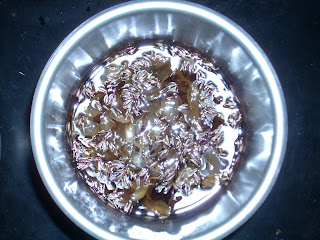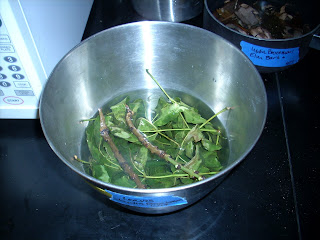
Yesterday we died with red cabbage as a group project, and it smelled awful! We each picked a mordant to mix with our boiled cabbage to produce a dye bath. I picked aluminum and Baking soda to make 2 separate dyes. Everyone else did the same with copper, iron, nickle, cabbage solo, cream of tarter, and I am for getting one... We got every pastel color in the rainbow, but the colors were not very brilliant. So we left samples in each dye over night to see if we could get stronger color. But from what I hear, cabbage is a very unstable dye and wont much color, or keep it on the fiber for very long.











